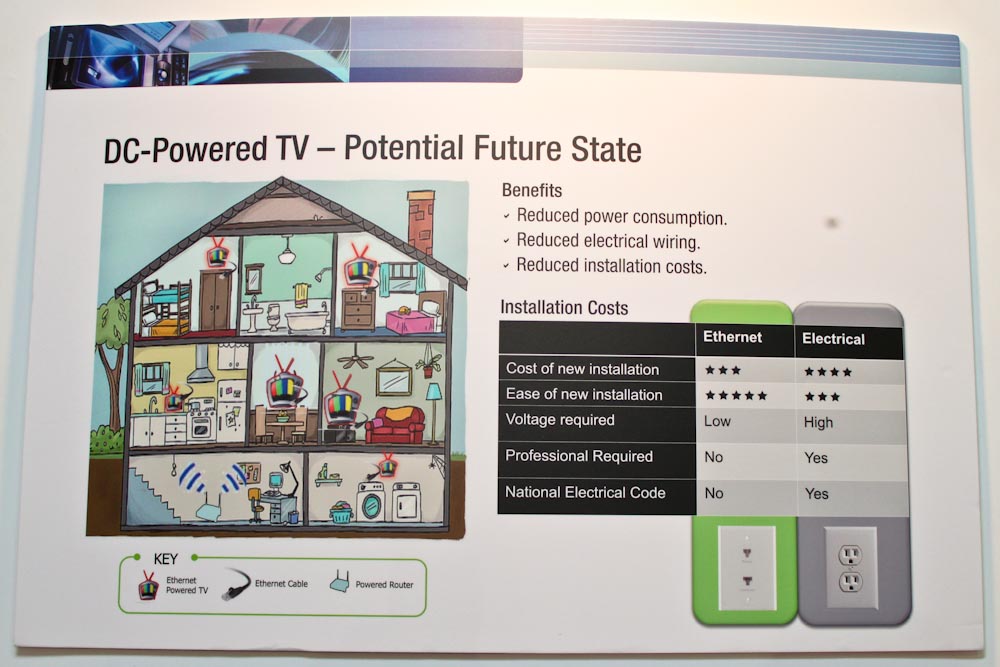3M Keeps Your TV Plugged in with Ethernet
posted Sunday Jun 26, 2011 by Nicholas DiMeo

3M, the stationary company, has created something so cool that you'll want one of their Post-It notes to remember it. They have come up with an Ethernet-powered TV that doesn't need a power plug. If you didn't know or are trying to figure out what index cards and page labels have to do with new technology with TVs, 3M has been also working in the display industry for a long time. They have worked in-depth on a device called a front polarizer, which determines how to infuse light into the TVs. This polarizer rests between the glass on the TV and the actual liquid crystals.
So while that work doesn't relate directly to creating a new tech for televisions, 3M has also been behind pushing the industry to find out how to make displays manage power more efficiently. 3M's polarizers are said to help bring down the power consumption of LCDs, to the point where it won't need to be plugged in.
We have a fact sheet image and more after the break.
What's cool about this technology is that it simply uses a powered ethernet port. There is a small catch, though; the home router you would connect the TV to would require something called Power over Ethernet, or PoE, which as of now isn't a common feature. However, you can easily upgrade your router and you'd be off and running.
3M boasts that it's also simpler to install and easier to afford powered ethernet ports over having an electrician come in and install more power outlets into a home. Granted, I haven't encountered newer homes with a lack of power plugs, but I can see where this would benefit apartments and older homes. It also doesn't hurt that if one were to install some ethernet ports around the house, you'd have a completely wired network in your living space, which we all know is far superior to a wireless connection, especially when some people have multiple signals flowing through their home from several sources.
What I see is that one cable will be needed for Internet and for power. Add that to the one cable needed for audio and video with HDMI, and it's an instant win. What do you think? Will this technology take off or is it just a cool idea without a lot of practical use? We want to know in the comments.


